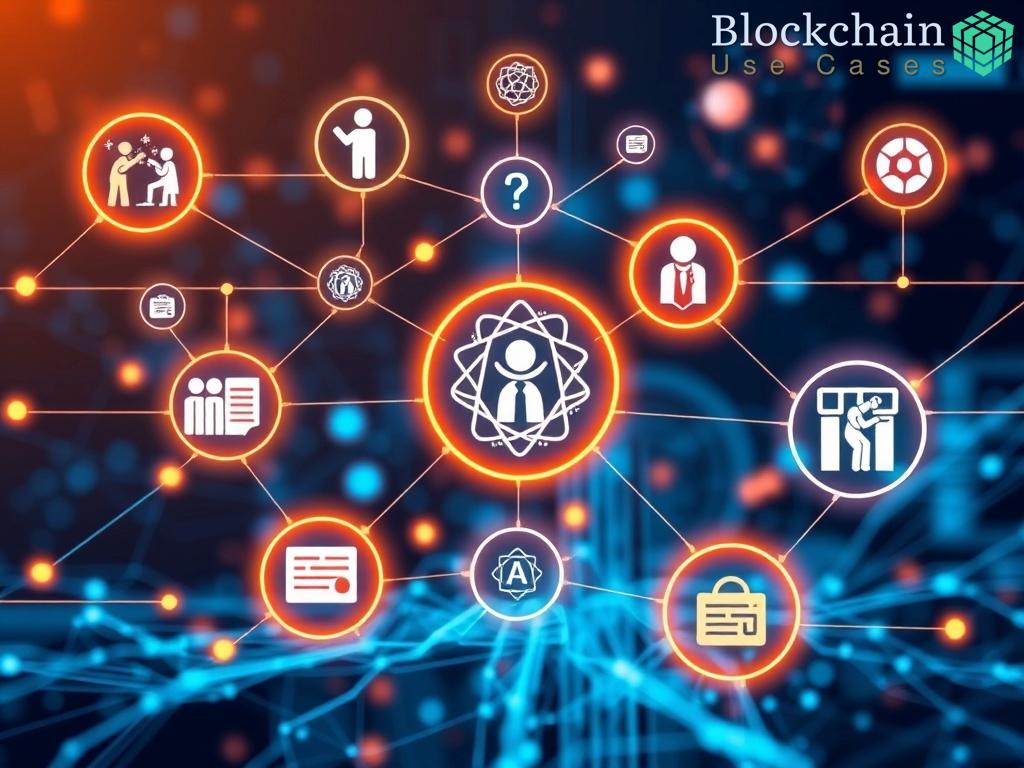Understanding Blockchain Technology in Education

Decoding Blockchain: A Transformative Tool for Education
As the digital landscape evolves, so does the need for robust mechanisms to ensure transparency and trust. Blockchain technology emerges as a revolutionary force, especially in the realm of education. Its decentralized nature provides an unprecedented level of security and transparency, essential for educational software licensing. By understanding how blockchain operates, stakeholders can leverage its capabilities to streamline licensing processes and safeguard intellectual property.
Key Benefits of Blockchain in Education Software Licensing
Incorporating blockchain into educational software licensing offers numerous advantages, enhancing both operational efficiency and security. The following list outlines the primary benefits:
- Transparency: All transactions are recorded on a public ledger, making it easy to track and verify software licenses.
- Immutability: Once data is entered into the blockchain, it cannot be altered, ensuring the integrity of licensing agreements.
- Decentralization: Eliminates the need for intermediaries, reducing costs and streamlining processes.
- Security: Advanced cryptographic techniques protect against unauthorized access and fraud.
- Automated Compliance: Smart contracts can be employed to automate licensing agreements, ensuring compliance with terms and conditions.
Implementing Blockchain Solutions in Educational Institutions
To fully realize the potential of blockchain in educational software licensing, institutions must adopt a strategic approach to implementation. This involves understanding the technology and its applications, investing in the right infrastructure, and training personnel. Below is a table summarizing key steps for implementation:
| Step | Description |
|---|---|
| 1. Assessment | Evaluate current licensing practices and identify areas for improvement. |
| 2. Education | Provide training on blockchain technology to key stakeholders. |
| 3. Infrastructure | Invest in blockchain platforms and tools suited for educational software licensing. |
| 4. Pilot Program | Launch a pilot program to test blockchain applications in a controlled environment. |
| 5. Full Implementation | Roll out blockchain solutions across the institution after analyzing pilot results. |
Benefits of Transparency in Software Licensing
In an era where digital applications are omnipresent, the integrity of software licensing has become paramount. The integration of blockchain technology into educational software licensing is not merely a trend; it is a pivotal shift towards ensuring that transparency is embedded at every level. By fostering a transparent licensing environment, educational institutions can significantly enhance trust among stakeholders, thus paving the way for more effective collaborations.
Transparency in software licensing cultivates an atmosphere of accountability. When every transaction is recorded on a blockchain, it becomes effortless to trace the history of a software license from its inception to its current status. This traceability not only empowers educational institutions to conduct audits with ease but also reassures software developers and vendors that their intellectual property is protected. The visibility offered by blockchain serves as a deterrent against misappropriation and unauthorized use, thus safeguarding the interests of all parties involved.
Moreover, the clarity gained from transparent licensing practices facilitates better decision-making. Educational leaders can analyze license usage patterns and make informed choices about software investments. With access to real-time data on licensing compliance and usage, institutions can optimize their software portfolios, ensuring that they only pay for what they truly need. This strategic approach not only leads to cost savings but also enhances resource allocation, ultimately benefiting students and educators alike.
In the context of audits and compliance, a transparent licensing framework allows for smoother interactions with regulatory bodies. With accurate and immutable records readily available, institutions can swiftly demonstrate adherence to licensing agreements, thereby minimizing legal risks. The result is a more streamlined compliance process that can save time and reduce administrative burdens.
Use Cases of Blockchain in Educational Licensing
As educational institutions navigate the complexities of software licensing, blockchain technology emerges as a game changer. By providing a secure and transparent framework for managing software licenses, blockchain addresses many of the challenges faced by educators today. Through various innovative applications, stakeholders can experience enhanced efficiency, security, and trust in their licensing agreements.
One compelling use case of blockchain in educational licensing is the implementation of smart contracts. These self-executing contracts automatically enforce the terms of the licensing agreement, effectively reducing the burden of manual oversight. For instance, when a school subscribes to a specific educational software, the smart contract can automatically verify compliance with licensing terms, releasing payments only when conditions are met. This not only minimizes human error but also ensures that funds are allocated appropriately, enhancing financial accountability.
Another notable application is the establishment of a decentralized license registry. This system allows educational institutions to access a transparent and immutable record of software licenses. In doing so, it creates an environment where institutions can easily verify the authenticity of their licenses and track expiration dates, renewal processes, and usage statistics. Such visibility empowers administrators to make informed decisions regarding software investments, thus aligning their resources more effectively with educational goals.
The reliance on blockchain technology in educational software licensing goes beyond mere operational efficiency; it fundamentally enhances data integrity. By leveraging the decentralized nature of blockchain, educational institutions can foster a culture of trust. Every transaction is recorded in a tamper-proof manner, ensuring that the history of software licenses is always transparent and accessible. This feature is particularly beneficial during audits when institutions must demonstrate compliance with licensing agreements.
Furthermore, the integration of blockchain facilitates collaborative partnerships between educational institutions and software providers. With transparent licensing practices, both parties can engage in open dialogues about usage, renewals, and pricing without the fear of misinterpretation or data manipulation. This transparency not only nurtures stronger relationships but also paves the way for innovation in educational offerings. As institutions and vendors work more closely together, they can adapt and evolve their products to better meet the needs of educators and learners alike.
In addition, the use of blockchain can streamline the process of license transfers and sharing among institutions. As collaborations between schools become more common, the need for a seamless transfer of software licenses is imperative. Blockchain provides a secure and efficient method for managing these transfers, ensuring that all parties are updated in real-time about the status of shared licenses. This capability enhances cooperation among educational institutions and maximizes the utilization of software resources.
Challenges and Limitations of Blockchain Adoption
While the promise of blockchain technology in educational software licensing is substantial, its adoption is not without obstacles. Stakeholders must navigate a complex landscape of technical, regulatory, and cultural challenges that can impede the seamless integration of this transformative technology. Understanding these hurdles is crucial for educational institutions aiming to harness the power of blockchain effectively.
Technical Hurdles in Implementation
The implementation of blockchain technology can be technically demanding, requiring educational institutions to invest in specialized infrastructure and expertise. Many organizations may lack the requisite knowledge to deploy blockchain solutions effectively. The complexity of blockchain protocols can also deter institutions from shifting away from traditional licensing methods.
Regulatory and Compliance Concerns
Blockchain operates in a legal gray area in many jurisdictions, leading to uncertainty regarding compliance with existing laws and regulations. Educational institutions must grapple with the implications of data privacy regulations, such as GDPR, which may conflict with blockchain’s transparent nature. This tension can create barriers to widespread adoption and necessitates a careful balancing act to ensure compliance while leveraging the benefits of blockchain.
Cultural Resistance to Change
The shift to blockchain technology often requires a significant cultural transformation within educational institutions. Stakeholders may exhibit resistance due to a lack of understanding or fear of the unknown. It is essential for institutions to foster an environment of education and engagement to encourage buy-in from all parties involved, from administrators to educators.
In summary, while the integration of blockchain into educational software licensing holds great potential for transparency and efficiency, the challenges associated with its adoption cannot be overlooked. Recognizing these limitations allows institutions to develop informed strategies for implementation and to mitigate risks effectively.
Future Trends in Educational Software Licensing
Embracing a Decentralized Future
The educational landscape is witnessing a paradigm shift with the integration of blockchain technology, particularly in the realm of software licensing. As institutions increasingly recognize the significance of transparency, the future of educational software licensing is likely to evolve dramatically. The adoption of decentralized systems will empower educational stakeholders to engage in licensing agreements that are not only secure but also verifiable. This transformation is set to redefine relationships between software providers, institutions, and learners, fostering a collaborative environment that prioritizes mutual trust.
AI and Blockchain: A Synergistic Approach
As we look ahead, the convergence of artificial intelligence (AI) and blockchain technology is poised to revolutionize educational software licensing. By harnessing AI-driven analytics alongside blockchain’s immutable ledger, institutions can gain profound insights into licensing trends and usage patterns. This synergy will enable educational leaders to make informed decisions about software investments, optimizing their resources and ensuring that licensing agreements align with evolving educational goals. Furthermore, the predictive capabilities of AI can facilitate proactive license management, alerting institutions to potential compliance issues before they escalate.
Global Standards and Interoperability
Another emerging trend is the push for global standards in blockchain implementations for educational software licensing. As institutions across the globe adopt similar technologies, the need for interoperability among different blockchain systems will become increasingly critical. Establishing common standards will not only enhance the efficiency of licensing processes but also allow for seamless collaboration across borders. By creating a unified framework, educational institutions can ensure that licensing agreements are universally understood and upheld, fostering an international ecosystem of trust and cooperation.


















